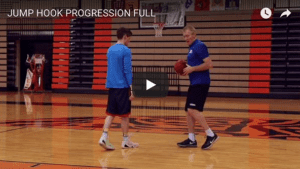A rundown tennis facility in Russia–with only a single, dingy court–produced more top 20 tennis players in a 3-year period than the entire United States. How did such a small area produce such amazing talent? That’s the question that prompted Daniel Coyle to write his book The Talent Code.
This post will dive into one of Coyle’s major takeaways: deep practice, and how you can apply it to your training. If you haven’t read The Talent Code, do yourself a favor and go out and read it. It’s one of my all-time favorites and absolutely revolutionized the way I train.
Even if you haven’t read it, the lessons in this post will be very useful for any athlete who wants to develop their talent and experience phenomenal gains.
Deep Practice
All improvement starts with a foundation of deep practice. Deep practice is different than regular practice in that it’s a deliberate and focused effort to improve.
In deep practice, a player operates on the edge of his/her abilities. It’s an uncomfortable feeling because you’re forced to slow down, make errors and then correct them. Coyle calls this the “sweet spot,” where the bar is slightly higher than your reach.
Although it may seem ineffective to spend time struggling like a newborn baby learning to walk, it’s precisely this kind of difficult and focused practice that provides the greatest returns. So when you’re training, be sure to practice drills that push your limits and force you to make errors. Then, spend the appropriate time to correct those errors.
There are 3 rules to deep practice: (1) chunking, (2) repeat, and (3) learn to feel it.
1) Chunking
Chunking simply means breaking down practice into smaller, bite-sized pieces. This way, you can focus your attention on each individual piece. This can help you spot your own errors and then go back and correct them.
In practice, this means that it is valuable to spend time working exclusively on specific skills. Rather than trying to perform a complex drill that incorporates shooting, passing, and ball handling, it may be more effective to divide that drill into each unique skill.
While there is definitely a time and place for drills that train multiple skills (like shooting off the dribble), be sure to spend time focusing on individual skills.
2) Repeat
There’s simply no way around it, repetition is necessary if you want to maximize your talent. Although deep practice is an effective tool, if you only do it sporadically, you won’t see any rapid improvement.
In practice, this means that you have to spend hours and hours in the gym working on your craft. However, don’t be fooled that simply being in the gym is getting you better. It’s only the time that you spend purposefully training that counts as repetition.
3) Learn to Feel It
Once you’ve practiced in the “sweet spot” that I mentioned earlier, you need to return to that feeling of reaching just beyond your grasp. This is the zone in which you should perform your repetitions.
This is not easy. It takes focus, attention and energy to continually practice at such a high level. So don’t be discouraged if you feel mentally or physically exhausted after just a few reps of deep practice. Keep going, and I promise you’ll see huge improvements.
How useful was this post?
Click on a star to rate it!
Average rating 4.7 / 5. Vote count: 6
No votes so far! Be the first to rate this post.



